Why you can trust Tom's Hardware
Radeon RX 6700 XT 1080p Gaming Performance
AMD pitches the Radeon RX 6700 XT primarily as a 1440p gaming solution, or alternatively, a 1080p solution targeting higher fps. We'll start with the 1080p results and move up to 1440p and 4K below. Given the high-end price, we're sticking with our ultra (max/highest without MSAA or SSAA) settings for this review. Our GPU benchmarks hierarchy includes results from 'medium' quality testing — or it will once we get it updated. We have the 6700 XT numbers, but need to update the text and charts.
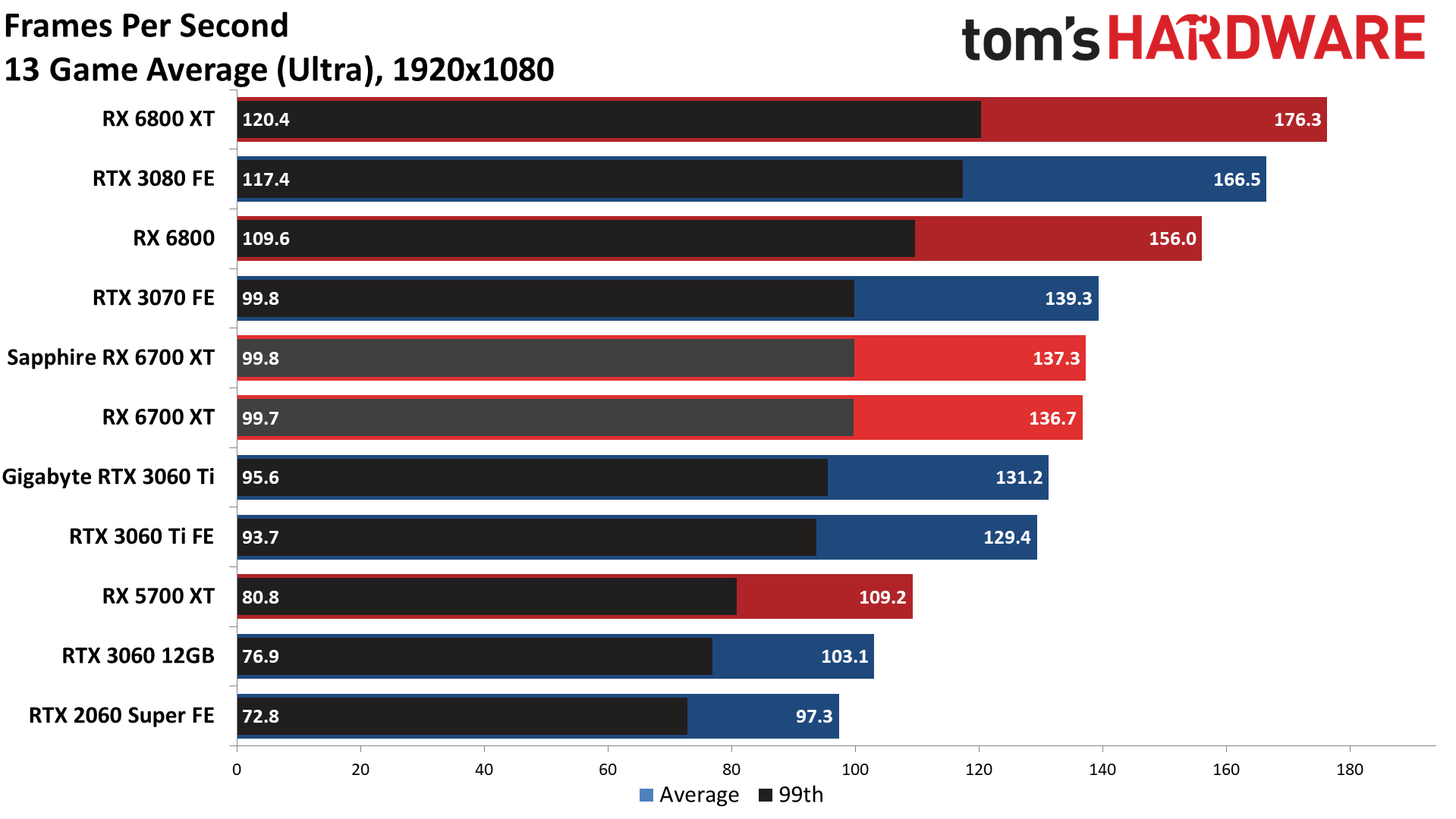








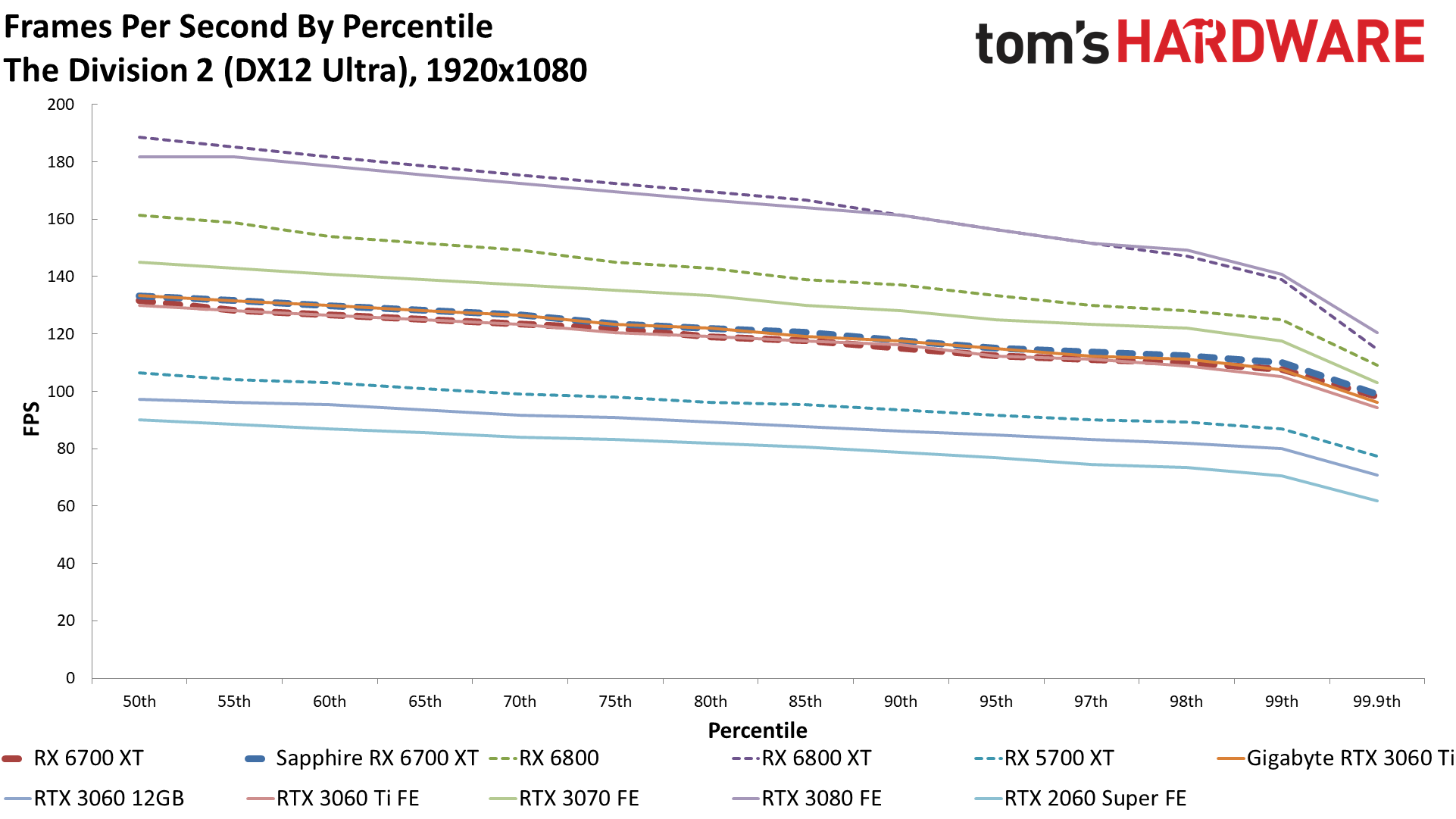








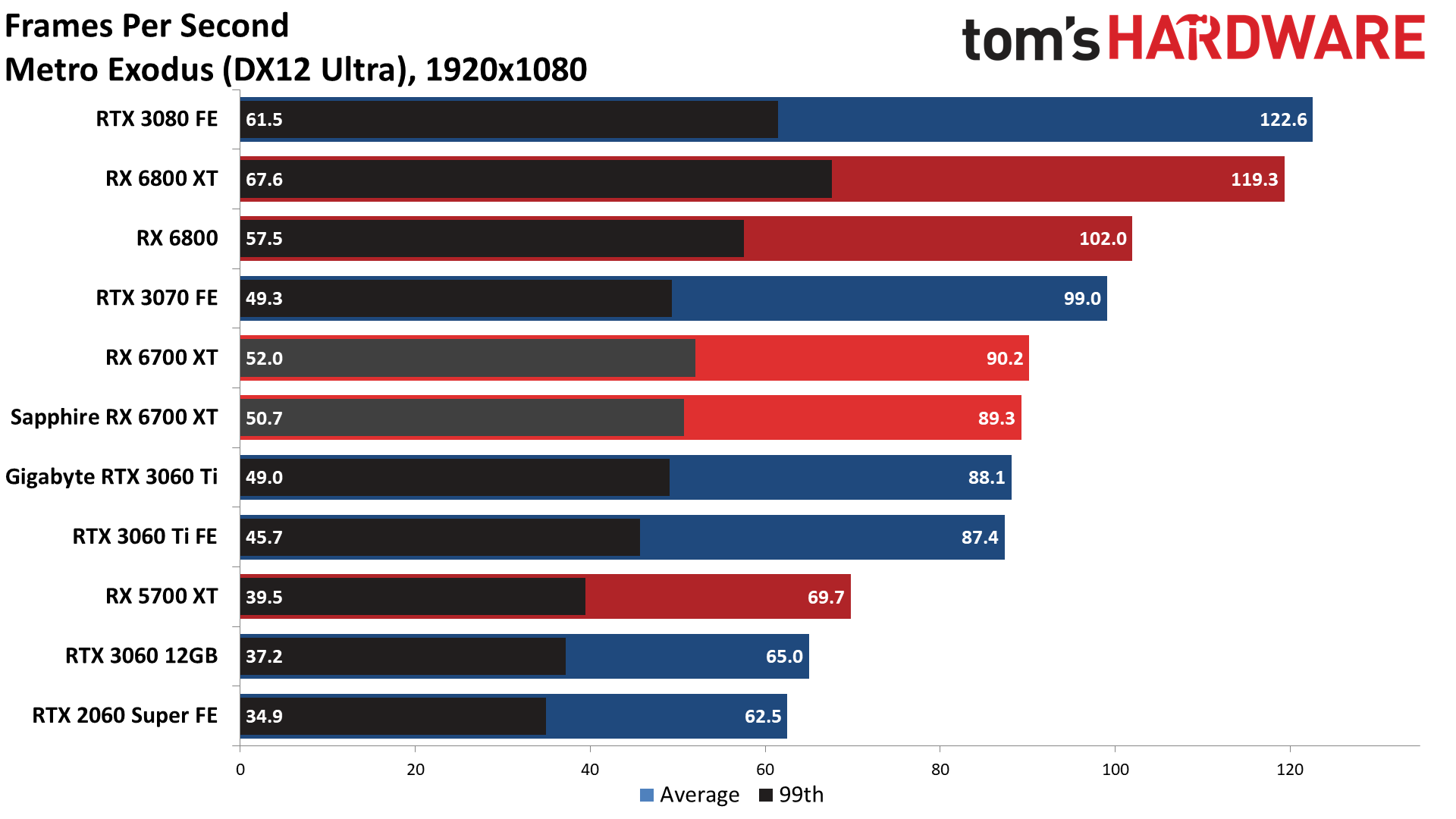









Overall, the RX 6700 XT achieves buttery smooth frame rates at 1080p ultra — no surprise there. Across our test suite, which doesn't include any DXR enabled games for this review, the card averaged 131 fps, about 7% faster than the RTX 3060 Ti and 1% slower than the RTX 3070. That disclaimer about not including any ray tracing tests matters, though. Watch Dogs Legion with DXR at ultra settings dropped performance to just 35 fps, while the RTX 3060 Ti managed 52 fps at the same settings — and with DLSS Quality mode enabled, the RTX 3060 Ti jumped to 70 fps.
As noted earlier, time constraints prevented us from doing a full suite of ray tracing benchmarks, and we'll look at that in the coming days. It's also important to remember that the enhanced visuals that come from ray tracing often aren't that noticeable. Improved reflections, lighting, and shadows might be nice, but not necessarily at half the frame rate. Of course we'd say the same thing about most games' ultra settings compared to high settings.
A few other comparisons are worth pointing out. The RX 6800 is (theoretically) $100 more than the 6700 XT, a 21% difference in price, and it's only 16% faster. The RX 6700 XT is also 26% faster than the previous generation RX 5700 XT, and over 40% faster than Nvidia's RTX 2060 Super, with a launch price that's about 20% higher than those two cards. If we include the factory overclocked cards from Sapphire and Gigabyte, the story remains much the same: The Sapphire card outperformed the Gigabyte card by 6% on average.
Looking at the individual game results, the RX 6700 XT — and AMD in general — delivered significantly better performance in Assassin's Creed Valhalla and Borderlands 3. Those are both AMD promotional games, and they both use the DirectX 12 API. The results suggest some fine tuning of AMD's performance, without similar effort on behalf of Nvidia. Other DX12 games like Dirt 5, Horizon Zero Dawn, and Forza Horizon 4 end up closer to a 10% lead, rather than 30-45%. If we dropped the AMD-friendly games, or added more games where Nvidia performance is better (e.g. quite a few ray tracing games), we could easily distort things to make it look closer. But that's not the point.
The main takeaway here is that AMD's newcomer lands right where you'd expect, in terms of traditional rasterization performance, when looking at the official launch prices from AMD and Nvidia. It's faster than the 3060 Ti, and close to the 3070, with a price slightly lower than the 3070. If you don't care about ray tracing, or you don't want an Nvidia GPU, the 6700 XT looks good.
Radeon RX 6700 XT 1440p Gaming Performance
























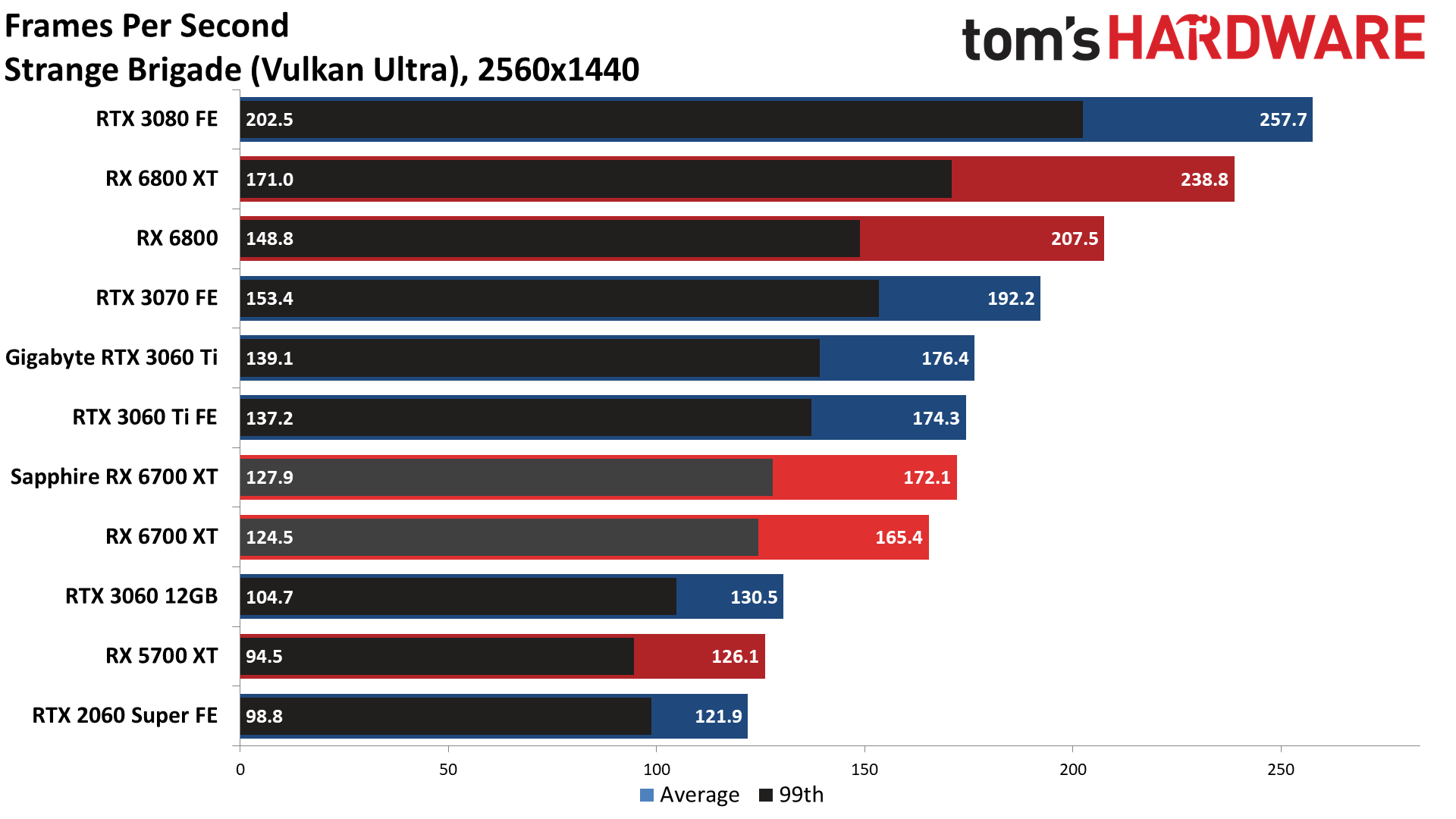



Gaming at 1440p continues to be the sweet spot in our view, combining high refresh rates with improved resolutions. The RX 6700 XT performance dropped by 23% compared to 1080p ultra, but all of the games we tested, at the settings we tested, stayed above 60 fps. Watch Dogs Legion does fall below 60 fps on minimum frame rates, as does Metro Exodus — and Valhalla just barely dips below that mark. Otherwise, 1440p ultra won't be a problem.
Get Tom's Hardware's best news and in-depth reviews, straight to your inbox.
The console comparison here is appropriate, considering the 6700 XT likely comes in around the same level as the Xbox Series X — XSX has 52 CUs clocked at 1.83GHz, compared to 40 CUs at 2.4GHz for the 6700 XT, so they're pretty close. How can an Xbox manage 4K gaming while a PC can't? Easy: Dynamic resolution scaling combined with slightly lower settings. 1440p upscaled to 4K at well over 60 fps is often what you get on consoles, and you can get the same with PCs.
Overall standings don't change too much with the higher resolution, though some of the margins become a bit larger. The 6700 XT still came in 7% ahead of the 3060 Ti, but it's now 3% behind the 3070. The RX 6800 lead increased to 21%, while the 6700 XT beat the 5700 XT by 30% and the 2060 Super by 48%.
In the individual games, the results varied. Looking at just the 3060 Ti and 6700 XT, AMD's lead in Valhalla and Borderlands wasn't quite as large as at 1080p, but Dirt 5, Far Cry 5, and Horizon Zero Dawn all have slightly bigger leads for AMD. That's why it ends up a net wash.
Radeon RX 6700 XT 4K Gaming Performance



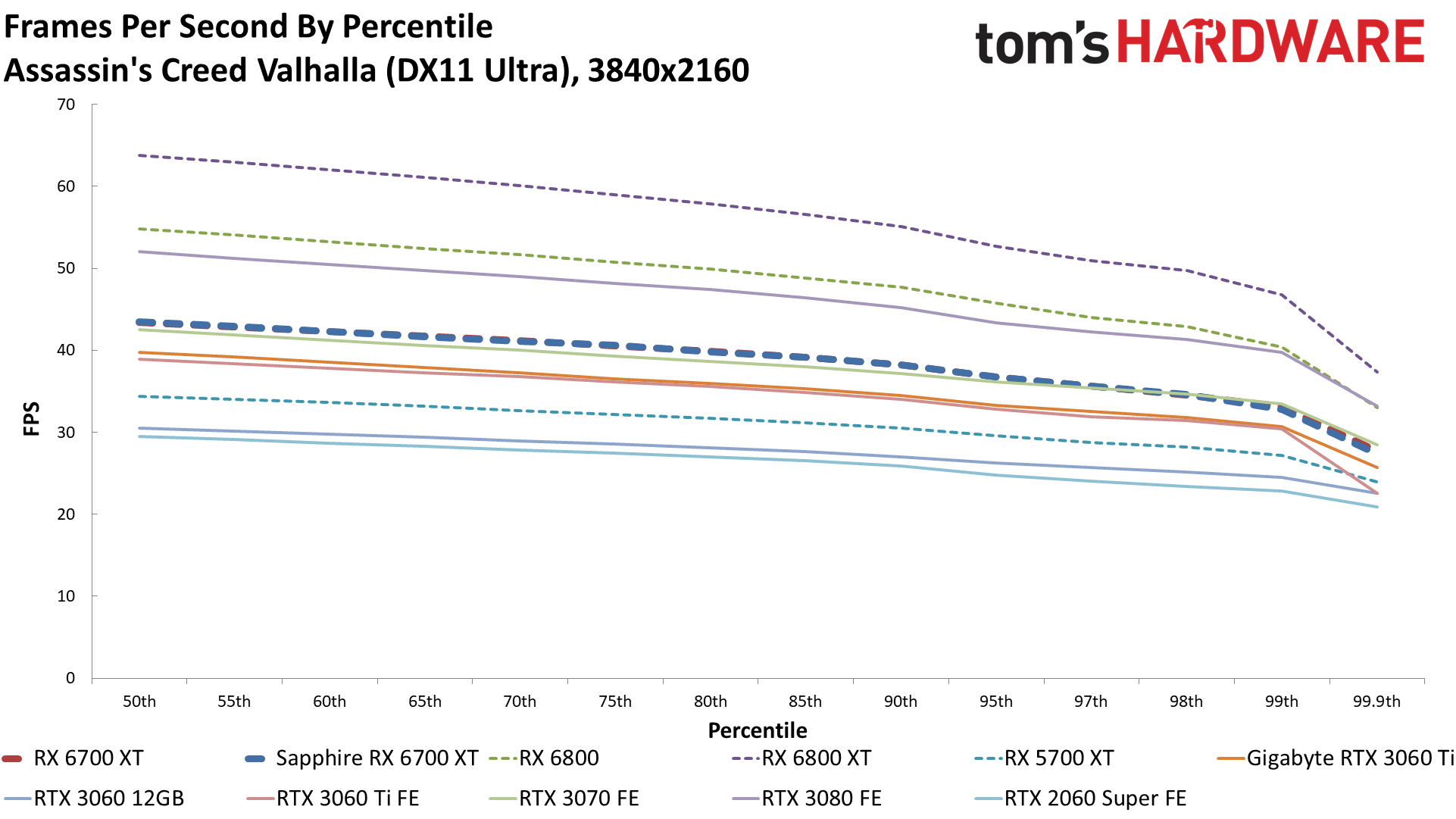
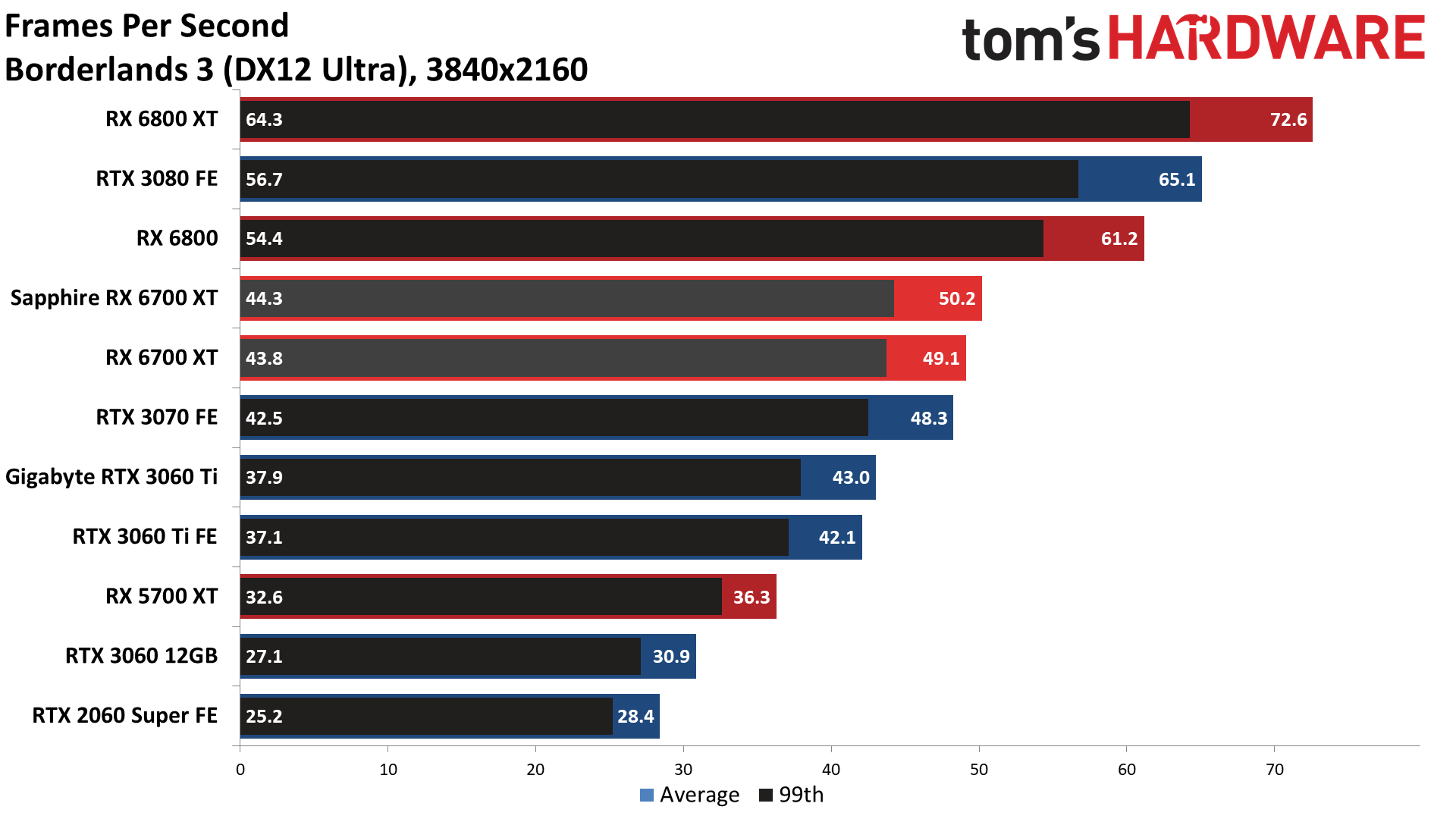

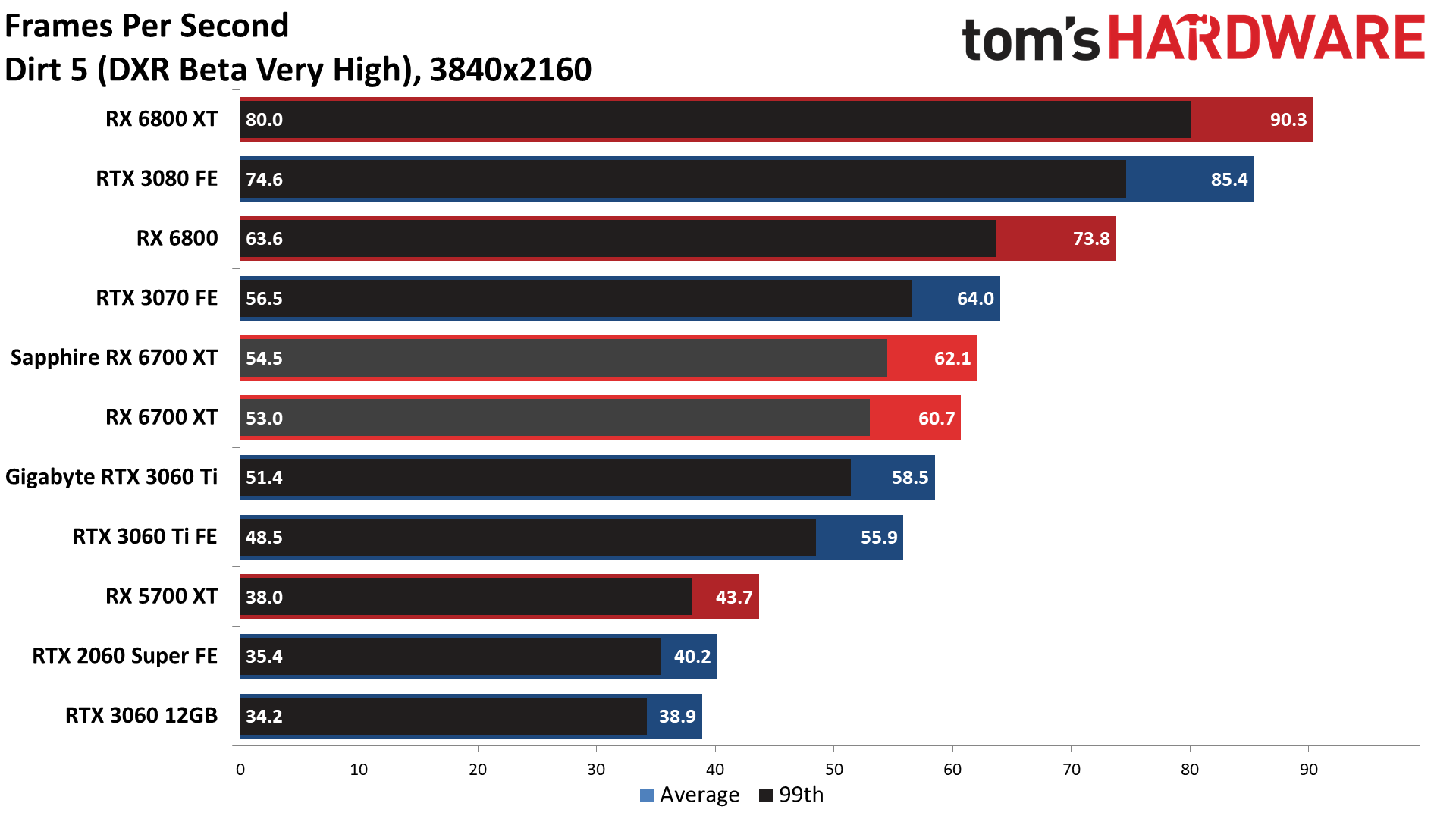















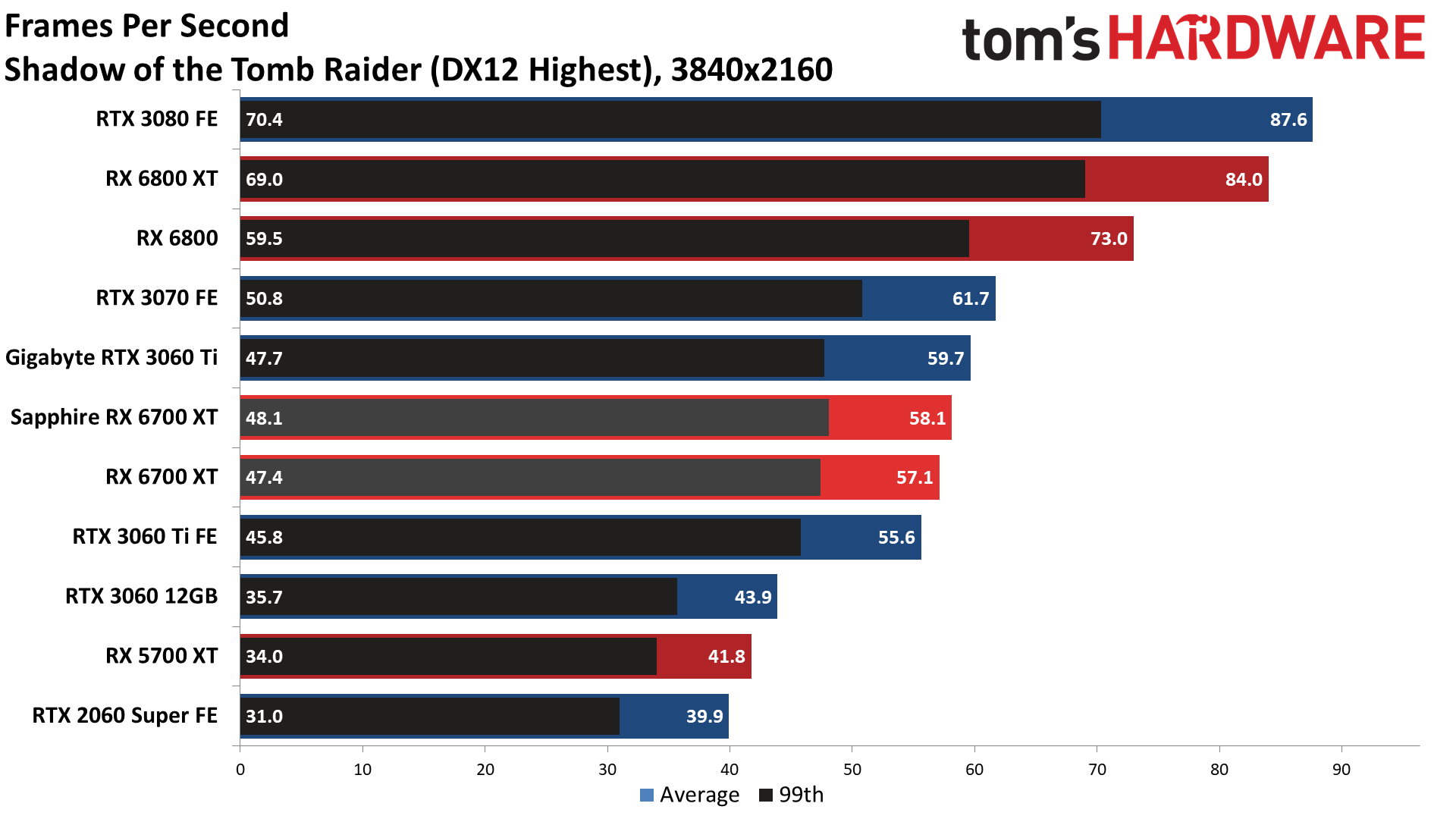
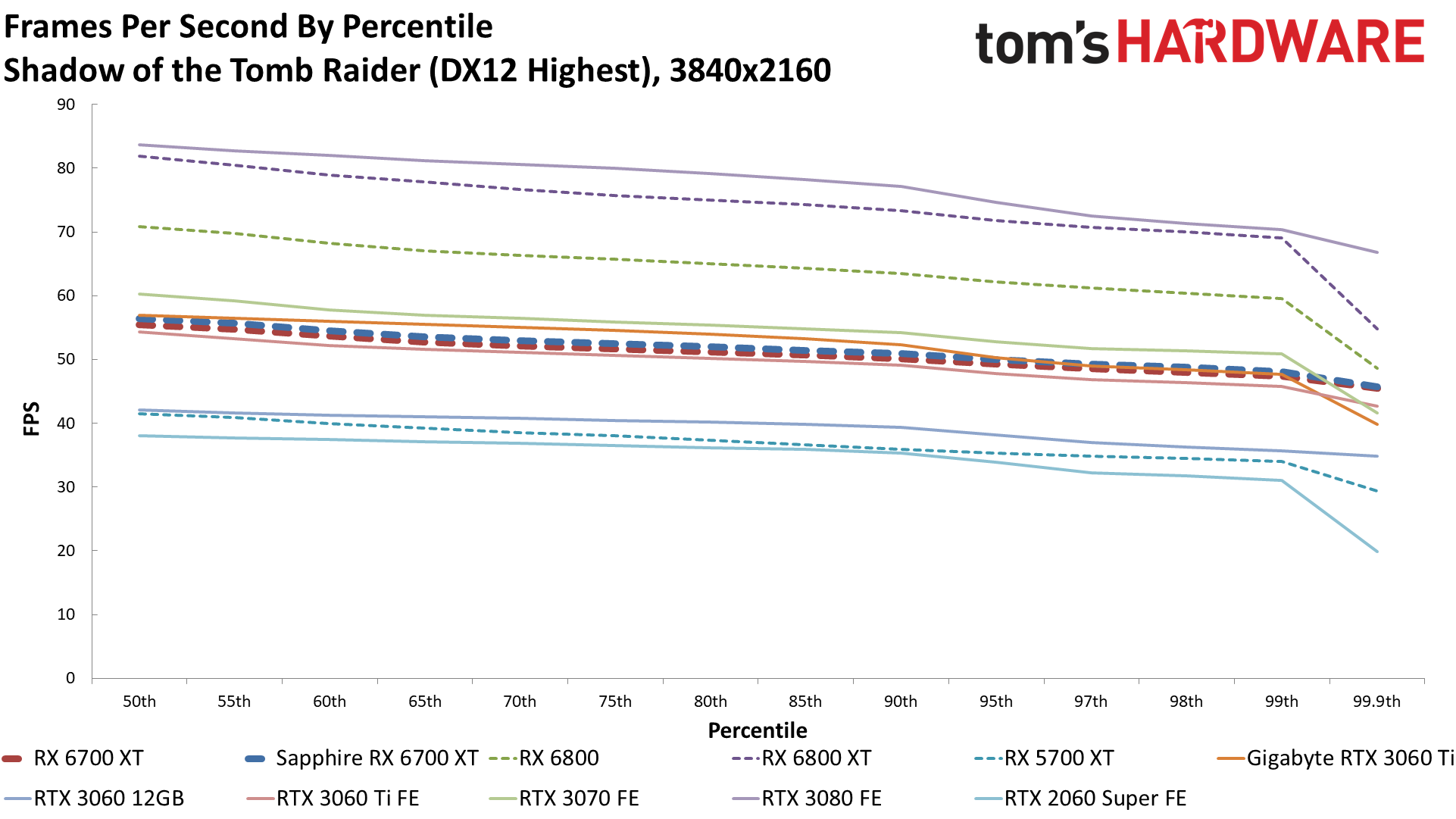
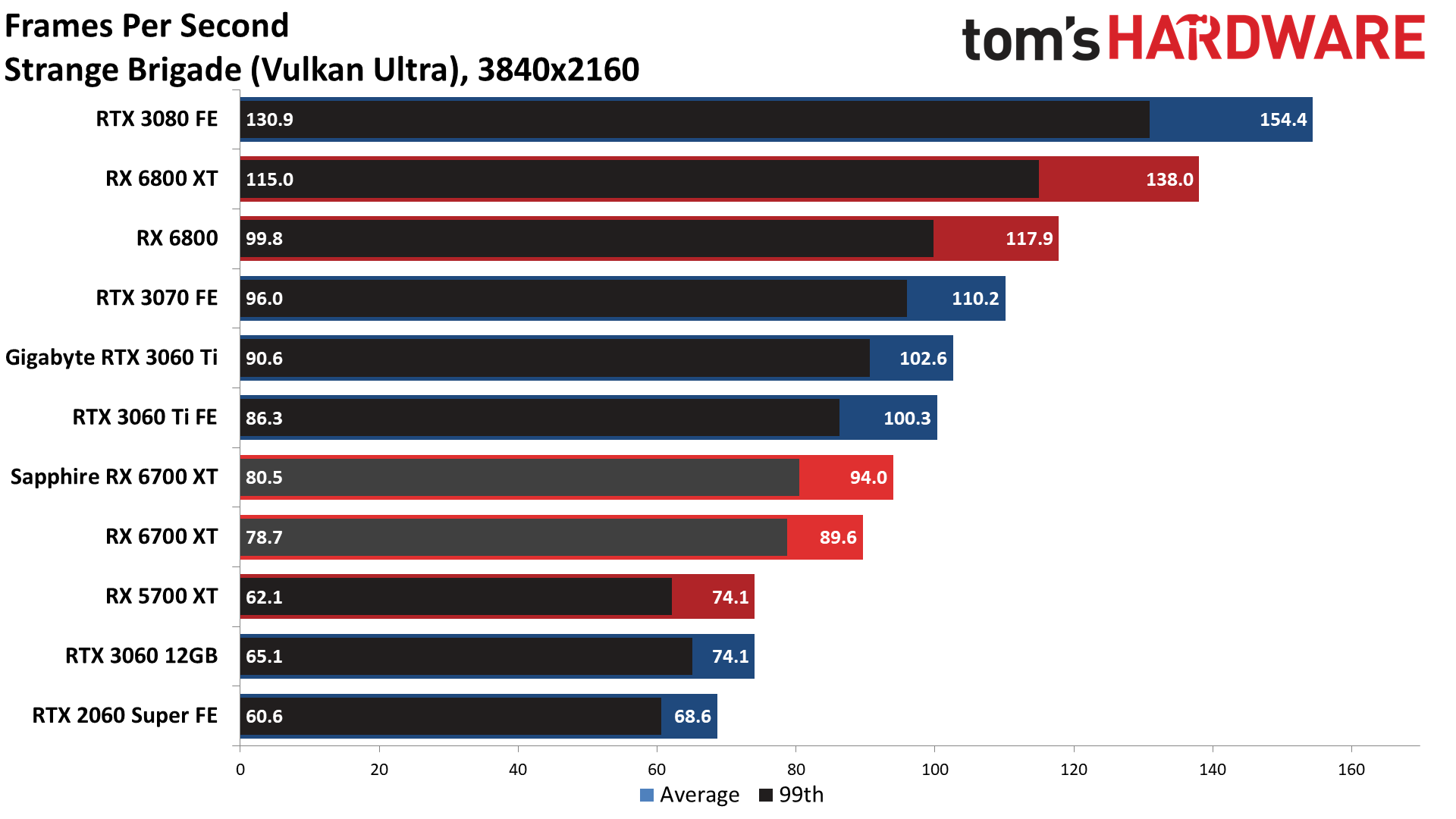



4K ultra tends to require extreme GPUs for 60 fps, but if you're willing to tweak the settings a bit, or use dynamic resolution scaling or Radeon Boost, it's certainly within reach. Across the full suite of 13 games, the 6700 XT managed 57 fps on average, with five of the games breaking 60 fps — and a few like Forza and Strange Brigade did so by a wide margin, pulling the overall average up. Memory bandwidth starts to play a bigger role at 4K, however, so the RX 6700 XT's lead over the RTX 3060 Ti now shrinks to just 2% — and again, DLSS can easily make up for the difference and then some.
That's actually a worthwhile point to make, considering Nvidia just announced three more games with DLSS support this morning: The Fabled Woods, System Shock, and Crysis Remastered. That brings the total number of games with DLSS 2.x support up to more than 20 currently available games, with another dozen or so in development. DLSS in quality mode generally looks just as good as native rendering with TAA, with 20-30% higher performance at 1080p and 1440p, and potentially 40-50% higher performance at 4K — more if you're willing to use balanced or performance DLSS modes. That's enough to swing our vote generally in favor of the RTX 3060 Ti, or at least it would be if prices weren't in the stratosphere.
MORE: Best Graphics Cards
MORE: GPU Benchmarks and Hierarchy
MORE: All Graphics Content
Current page: Radeon RX 6700 XT Gaming Performance
Prev Page Meet the RX 6700 XT Cards Next Page Radeon RX 6700 XT Power, Temps, Clocks, and Fans
Jarred Walton is a senior editor at Tom's Hardware focusing on everything GPU. He has been working as a tech journalist since 2004, writing for AnandTech, Maximum PC, and PC Gamer. From the first S3 Virge '3D decelerators' to today's GPUs, Jarred keeps up with all the latest graphics trends and is the one to ask about game performance.